A celebration of Trinidad and Tobago's diverse culture, beautiful landscape, and warm people. This blog aims to be a safe and welcoming space for all Trinbagonians, regardless of creed, race, or politics, or whether one is currently domiciled in T&T or living abroad.Painting in header by Karin Dawn Keshall-Best.DM for removals.
Don't wanna be here? Send us removal request.
Text
instagram
From the National Archives of Trinidad and Tobago:
“This month marks the 120th birthday of trade unionist, politician and lawyer Adrian Cola Rienzi!
Rienzi was a strong advocate of the rights of the working class. He was known for his early support of Afro-Indo unity, and for his defence of Indo-Trinidadian religious rights to cremation, the recognition of Muslim and Hindu marriages, and the establishment of non-Christian schools.
In addition to his contributions as the Mayor of San Fernando, Rienzi played an important role as a trade unionist and legal advisor in the Labour Movement.
He was the first President of the Oilfield Workers Trade Union (OWTU), and the All Trinidad Sugar Estates and Factory Workers Union.
Rienzi was born Krishna Deonarine in South Trinidad.
At a young age, he was elected President of the San Fernando branch of the Trinidad Workingmen's Association, which later became known as the Trinidad Labour Party (TLP) under the leadership of Captain A. A. Cipriani.
As a law clerk at Hobsons Law Firm, he was introduced to the work of Cola di Rienzo, a 14th century Italian politician and activist. Inspired by Rienzo and Adrian Clarke-an English magistrate who became Rienzi's mentor-he changed his name to Adrian Cola Rienzi in 1927.
Rienzi studied at Trinity College in Ireland, then moved to London and became involved in the Indian Independence League, and the US-based Universal Negro Improvement Association.
Upon his return to Trinidad in 1929, Rienzi continued to work with Cipriani's Trinidad Labour Party, eventually forming the Trinidad Citizens League (TCL) in December 1936.
After the 1937 Oilfield Workers Strike and Tubal Uriah "Buzz" Butler's arrest, Rienzi showed support by mediating the case, becoming his attorney and legal strategist for his campaign. In that same year, he was elected to the San Fernando Borough Council, and eventually, Mayor of San Fernando.
In addition to his role as the first President of the Oilfield Workers' Trade Union (OWTU), Rienzi established what is known today as All Trinidad Sugar and General Workers' Trade Union.
This newspaper was published Nov 15th 1941. It is part of the National Archives of Trinidad & Tobago Newspaper Collection.”
#trinidad and tobago#caribbean#west indies#west indian#trinbagonian#trinidad#trinidadian#Trini Heroes#trinbagonian history#history
3 notes
·
View notes
Text
youtube
Machel was on NPR’s Tiny Desk!!!
#trinidad and tobago#caribbean#west indies#west indian#trinbagonian#trinidad#trinidadian#culture#caribbean culture#west indian culture#soca#trinidadian music#caribbean music#machel montano
6 notes
·
View notes
Text
1960’s Trinidad, From Dominic Kalipersad on Instagram.
Lovely footage, but…”as English as plum pudding?” This was on the eve of independence and you could hear the desperation in the narrator’s voice.
#trinidad and tobago#caribbean#west indies#west indian#trinbagonian#trinidad#trinidadian#vintage photography#vintage
8 notes
·
View notes
Text




Buccoo Reef and Nylon Pool, Tobago.
Photos by Duane Kenny, See World not SeaWorld, Adrian Milliner, and unknown.
14 notes
·
View notes
Text













Street Foods of Trinidad and Tobago: doubles, pholourie, dhalpurie roti, corn soup, chicken foot souse, saheena, bake and shark, crab and dumpling, curry conch/lambi, oyster, aloo pie, gyro, and buss-up-shut “paratha” roti.
Photos by: The Trinidad Guardian, Off the Wheaten Path, anax44, Amber Rayo, Foodie Nation, EatAhFood, David’s Been Here, Cooking with Ria, Hafiza Hosein, Sami’s Gyros, and We Trini Food.
N.B: I think that the term “street food” is very vague and contested, so some people might disagree with a few of the choices included in this list, which is cool 😎. Also...gyros may not be native to Trinidad, but we Trinis love them, so its honorary local street food :3
#trinidad and tobago#caribbean#west indies#west indian#trinbagonian#trinidad#trinidadian#tobago#tobagonian#culture#caribbean culture#west indian culture#trinidadian food#west indian food#caribbean food#food
26 notes
·
View notes
Text



Matura River, by Pedro Lastra.
8 notes
·
View notes
Text







Las Cuevas Beach, Trinidad, by Trini Surfer (Alan Charles).
6 notes
·
View notes
Text




















Local sweets of Trinidad and Tobago: sugar cake, pawpaw ball, toolum, tamarind ball, guava cake, bene ball, chip-chip, cassava pone, shaddock candy, coconut fudge, red mango, red plum, salt prune, snow prune, kurma, milk barfi, ladoo, jalebi, gulab jamoon, and coconut barfi.
Photos by Tropical Isle Roti Shop and Bakery, Kiba’s Place, Simply Trini Cooking, Trini Cooking with Natasha, Uncommon Caribbean, WizzyTheStick, Debra L.B., wildgirl, Danielle “Aminah” Samuels, Priya Saihgal, Shawn Samuel, Marsha Ramdeen, Lotus Trading Ltd, Marissa of OMG Food, We Trini Food, The Trinidad Guardian, Shaun Rambaran, and Joyful Oven.
#trinidad and tobago#caribbean#west indies#west indian#trinbagonian#trinidad#trinidadian#culture#caribbean culture#west indian culture#west indian food#trinidadian food#trinidadian cuisine#food#caribbean food
6 notes
·
View notes
Text







The Magnificent Seven of Port of Spain, Trinidad and Tobago’s capital, by Kerneil Khan (Lemniscate).
From top to bottom: Queen’s Royal College, Hayes Court, Mille Fleurs, Romoor House, Archbishop’s Palace, White Hall, and Stollmeyer’s Castle.
#trinidad and tobago#caribbean#west indies#west indian#trinbagonian#trinidad#trinidadian#architecture
13 notes
·
View notes
Text



100 Steps Beach, Trinidad, by Kerneil Khan (Lemniscate).
7 notes
·
View notes
Text
From Ethan Cummings (@ethxnexplores) on Instagram:
“One Caribbean ❤️🏝️”
Note: Okay, this isn’t Trinbagonian and was actually filmed at Grenada’s 50th Independence Day celebrations, but it’s so badass that I had to post it! All ah we is one!
#caribbean#west indies#west indian#caribbean culture#west indian culture#afro caribbean#indo caribbean#grenada
4 notes
·
View notes
Text
instagram
From Brown History on Instagram:
“Did you know that in 1884, the British colonial government in Trinidad & Tobago banned "the beating of any drum, the blowing of any horn, or the use of any other noisy instrument"?
Drumming is an integral part of celebrations for many communities on the island. However, this did not deter the people; instead, it strengthened their resolve to preserve their traditions and religious customs.
Afro-Trinidadians discovered bamboo drums, known as "tamboo bamboo," as a popular new way to sustain the rhythms essential to their culture (see video). By the late 1930s, tamboo bamboo players began turning to metal objects like kitchen utensils, pots, pans, and buckets to create music.
The discovery of oil near the island's shores, coupled with WW II, brought hundreds of thousands of American 55-gallon oil drums to Trinidad. These discarded drums eventually paved the way for steelpans, now recognized as the national instrument of Trinidad & Tobago.
The drumming ban also affected East Indians. The "tassa" drum was central to their religious practices, particularly in Muslim observances. In 1884, more regulations banned the Hosay processions, which honors the martyrdom of Hussain, the grandson of the Prophet.
In an act of civil disobedience, a group of Indian laborers defied the suppression by continuing the Muharram procession as usual, beating tassa drums and carrying tajahs. They believed the law was unjust. However, as the procession passed, police opened fire on the crowd of men, women, and children. Between 18 and 20 people were killed, and hundreds were injured. This tragedy came to be known as "The Hosay Massacre of 1884." The British, however, referred to it as "The Hosay Riots."
Despite historical tensions, the drumming traditions of East Indians and Africans became a shared cultural bond. Over time, these traditions influenced each other, with Afro-Trinidadians playing tassa drums and Indo-Trinidadians performing in steelbands. Hosay has since evolved to include the wider community, becoming a shared event.
Source: Steel Drums and Steelbands by Angela Smith”
#trinidad and tobago#trinidadian culture#trinidadian#trinidad#caribbean#caribbean history#caribbean culture#west indian history#west indies#colonialism#afro caribbean#indo caribbean#afro trinidadian#indo trinidadian#hosay#steelpan#tamboo bamboo#Trinidadian history#history
33 notes
·
View notes
Text

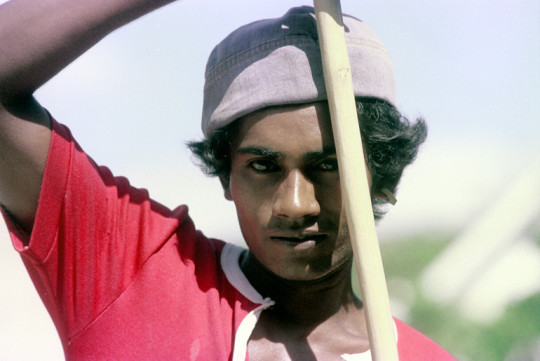

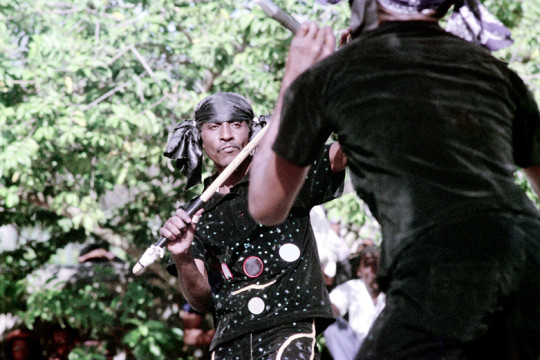
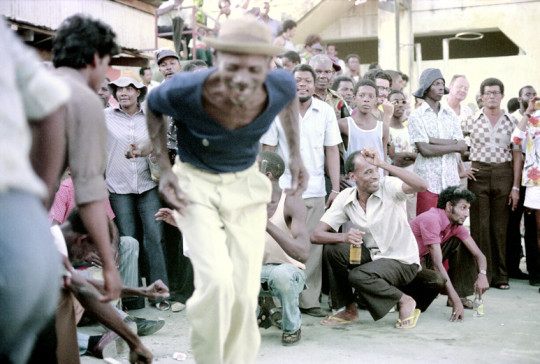

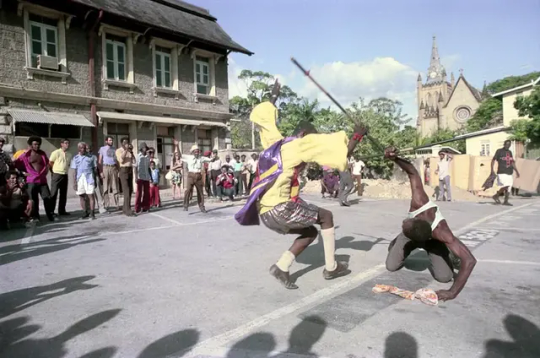

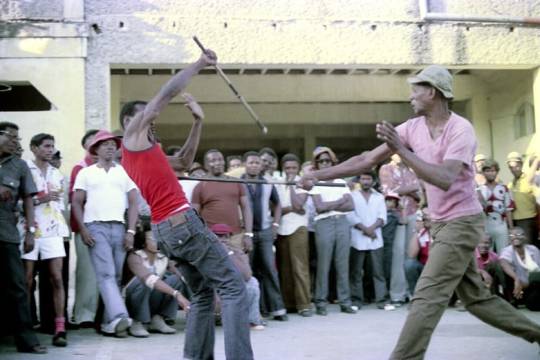
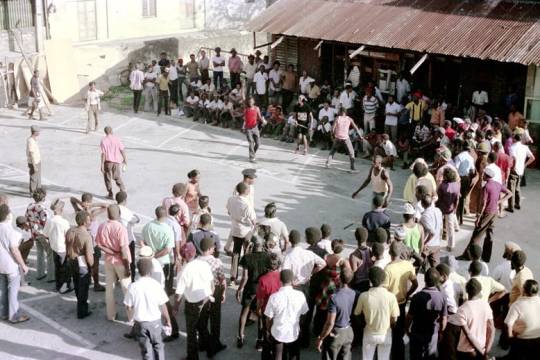
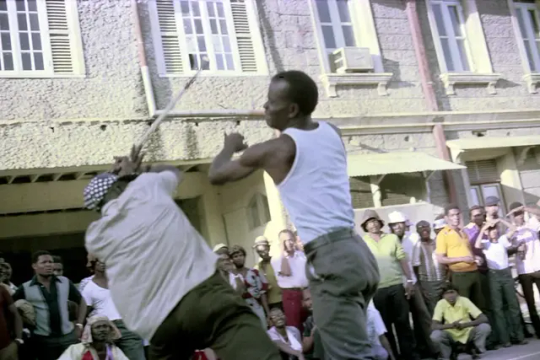

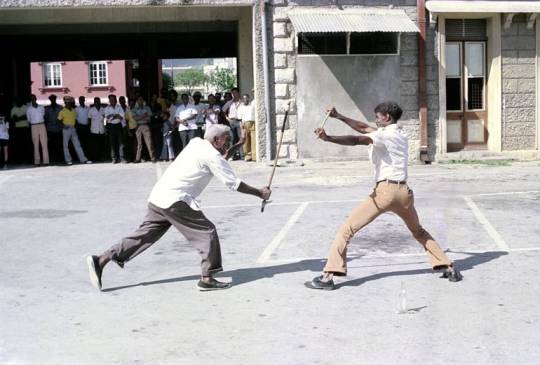
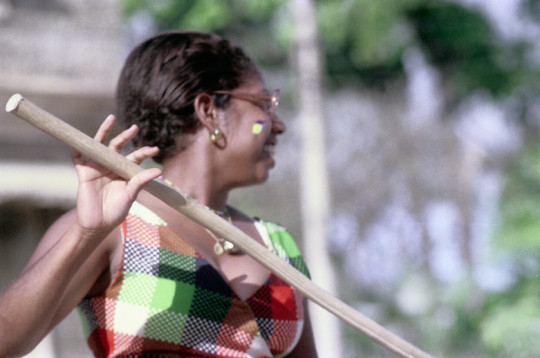
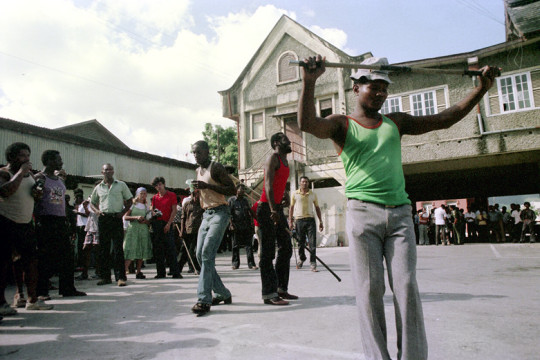
Calinda stick fighters in Port of Spain, Trinidad, February 1975. Photgraphs by Nick DeWolf.
#Trinidad and Tobago#Trinidad#Caribbean#West Indies#west indian#Calinda#Kalenda#Kalinda#caribbean culture#trinbagonian culture#west indian culture#vintage photography#afro-caribbean#afro-trinidadian
16 notes
·
View notes
Text
Happy New Year's to all Trinis the world over 🎆🥂
#trinidad and tobago#caribbean#west indies#west indian#trinbagonian#trinidad#trinidadian#culture#caribbean culture#trinidadian culture#west indian culture#trinidadian music#caribbean music#the baron#auld lang syne
6 notes
·
View notes
Text
From CNC3 News:
“Joshua 'D Pan Man' Regrello has ended his record setting run at exactly 31 hours. He then played the National Anthem of Trinidad and Tobago to end his historic achievement.
Arts & Culture Minister Randall Mitchell congratulated him saying, "You made us proud." He also received accolades from Pan Trinbago, whose president, Beverly Ramsey-Moore stated:
"Joshua's passion, resilience, and unyielding determination are an inspiration to all."
[Video by KEVON FELMINE]”
#trinidad and tobago#caribbean#west indies#west indian#trinbagonian#trinidad#trinidadian#culture#caribbean culture#steelpan#caribbean music#trinidadian music#west indian music
17 notes
·
View notes
Text
Here's the last batch of Trini parang tunes! Parts 1 and 2 here!
Have a Merry Christmas, you guys 💃🏽🎄
PS: My apologies for not including many other popular parang songs! Tumblr has this infuriating copyright protection system in place in which you get an error message uploading certain songs...it's been a gamble experimenting with which tracks Tumblr allows or bans. Not even adding a few seconds of empty air at the beginning of these "banned" tracks bypasses the system. So no Soca Santa or Anda Parrandero, among others :(
#trinidad and tobago#caribbean#west indies#west indian#trinbagonian#trinidad#trinidadian#culture#caribbean culture#west indian music#west indian culture#caribbean music#trinidadian music#parang#soca parang
6 notes
·
View notes
Text

From the National Archives of Trinidad and Tobago on Instagram:
“Check out this photo of the Louis family in Trinidad, who have made parang instruments for generations. These craftsmen can be seen here carefully assembling "cuatros" with inlaid wooden panels.
The musical instruments used by parang singers, or parranderos, are a significant part of what makes parang such a unique art form. Maracas or chac-chacs are instruments that were used by the First Peoples, while the cello, violin and guitar are Spanish in origin.
Today, parang is most popular in the areas of Lopinot, Paramin, Rio Claro, Arima and Santa Cruz, with the National Parang Association of Trinidad and Tobago often holding annual events countrywide.
This photo is courtesy of the book "Patterns of Progress: Trinidad and Tobago 10 Years of Independence", designed and edited by Roy Boyke.
This book is part of the National Archives of Trinidad and Tobago Reference Library.
References:
Mavrogordato, Olga J. Voices in the Street. Paria Pub. Co., 1996.
Taylor, Daphne Pawan., and George Alexander Thomas. Parang of Trinidad. National Cultural Council of Trinidad and Tobago.”
#trinidad and tobago#caribbean#west indies#west indian#trinbagonian#trinidad#trinidadian#caribbean culture#culture#trinidadian culture#West Indian culture#Instagram
15 notes
·
View notes